Atlantic Monthly Contributors's Blog, page 172
May 6, 2016
The Donald Trump Veepstakes: A Cheat Sheet

For decades, a few antiquated bon mots about the vice presidency have held sway in discussions about running mates. For example, there’s Teddy Roosevelt’s declaration, “I would a great deal rather be anything, say professor of history, than vice president.” Even better was John Nance Garner’s verdict that the office he held under FDR was “not worth a bucket of warm piss.” Those quips really hardly apply anymore; they’re as archaic as their authors. These days the Naval Observatory is a nice place to land. You could end up amassing unprecedented power and a man-sized safe, like Dick Cheney. You could end up with impressive power and become an aviator-clad folk hero, like Joe Biden.
Or maybe not. Will anyone want to be the running mate to presumptive Republican nominee Donald Trump? There are the character risks in cozying up to a man who’s liable to make a racist comment or accuse a rival’s father of being involved in the Kennedy assassination. There are the career risks of becoming associated with a man who much of the Republican Party still doesn’t like. And there are the organizational risks to signing on as No. 2 to a man who’s famously a go-it-alone maverick.
Related Story

Where Republicans Stand on Donald Trump: A Cheat Sheet
Will serious policymakers really risk all that? Ha! Of course they will. Plenty of major figures have said no, but plenty remain open to it. As another politician of yore, Sam Rayburn, pointed out, “Well, there is always the thought in a fellow's mind that he might get to be president.” At this stage in the campaign, it’s still customary for possible picks to insist they’re not interested. Don’t believe it quite yet.
Just who Trump might choose, though, is a different matter. He has said he’ll pick a politician to balance his own outsider status. Trump has also said that Ben Carson, his former rival, will help lead up the process to pick a running mate. Things didn’t get off to a great start. Carson told The Wall Street Journal that Trump might consider an independent or a Democrat; Trump promptly said he’d only pick a Republican. As the Journal notes, the convention delegates will also have to ratify Trump’s choice, adding intrigue.
Who’s on the list? Here’s a cheat sheet of some of the names being floated—either by Trump and his aides; or by the candidates or their supporters themselves; or perhaps just being murmured by what Russell Baker memorably called “the Great Mentioner.” Forecasting who a presidential nominee will pick as a running mate is a famously foolish errand, but we’ll keep this list updated as the situation develops, right up to Trump’s announcement, which he says will come at the Republican National Convention in July.
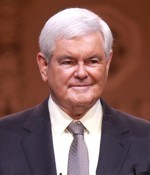
Gage Skidmore
Newt Gingrich
Who is he? The speaker of the House from 1995 to 1999, Gingrich ran unsuccessfully for president in 2012.
The scuttlebutt: Gingrich is perhaps the leading contender in Beltway buzz. Though he didn’t endorse Trump during the primary, he repeatedly defended him from his critics. More recently, he wrote a fawning essay titled “What they never understood about Donald Trump” in The Washington Times.
Pros: With his long career on the Hill and in Republican circles, Gingrich would check the politics box for Trump. As an intellectual—self-styled, at least—he might offer some counterweight to impressions of Trump as a lightweight. Gingrich, unlike Roosevelt, would apparently rather be vice president than a professor of history.
Cons: While less prone than Trump to racist outbursts, Gingrich has been known to say wacky things. He has plenty of his own critics in GOP circles, and he’s got his own personal baggage—two divorces and three marriages to match Trump’s. As an aging white man, it’s unclear whether he could expand the Trump coalition. He brings little foreign-policy cred.
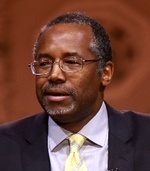
Gage Skidmore
Ben Carson
Who is he? The famed retired neurosurgeon was one of the many GOP candidates Trump vanquished this year.
The scuttlebutt: Wait, isn’t he leading the VP search? That’s hardly an impediment—just ask Dick Cheney, who led George W. Bush’s running mate search and selected himself. Carson has generally said he’s not interested, but that hasn’t dampened speculation.
Pros: Carson is personally likable and well-liked, and he could appeal to social conservatives.
Cons: Didn’t you see the GOP primary? Where Trump is untutored and sometimes scary on policy, Carson is even less tutored, and often shaky. Given his lack if politics and policy experience, he’d do little to shore up Trump’s credentials with people who view Trump as dangerously naive about policy.
Chris Christie
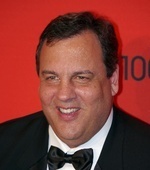
David Shankbone
Who is he? The governor of New Jersey, Christie was the first major establishment Republican to endorse Trump.
The scuttlebutt: Surely there must be some reason why Christie has been willing to endure endless mockery for standing, staring vacantly, behind Trump at campaign events. Could it be the promise of a VP slot?
Pros: Christie would bring comparative gravitas to the ticket. He’s a two-term governor and former U.S. attorney, a dynamic campaigner, and he seems to get along well with Trump.
Cons: Just what the ticket needs: Another angry dude from the Northeast with high unfavorables. Christie infuriated many fellow Republicans by backing Trump, but now that many of them are coming around, perhaps that’s not a big deal.
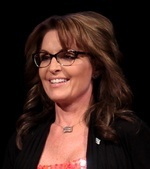
Gage Skidmore
Sarah Palin
Who is she? The former governor of Alaska endorsed Trump in January. She was John McCain’s running mate in 2008.
The scuttlebutt: Palin is a high-profile endorser and has been an ambitious politician in the past. When Trump was asked about the prospect of running with her in January, he said: "I don't think she'd want to do it … she’s been through that.”
Pros: Trump is weak with women and still stands to convince very conservative voters that he is a true conservative. Palin might help him on both counts.
Cons: Are you younger than eight? (If so, go outside and play!) If not, did you sleep through the 2008 election? We’ve seen how this goes.
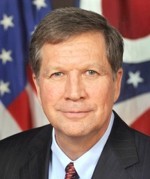
Wikimedia
John Kasich
Who is he? The governor of Ohio, Kasich was the last remaining Republican to leave the race.
The scuttlebutt: Kasich’s critics in the party accused him of staying in the race to hurt Cruz, and thus improve his chances at the VP slot. Trump has sent mixed messages, saying that he’d be “interested in vetting John” but also suggesting he was an unlikely choice.
Pros: Kasich has deep political experience, as both a congressman and a two-term governor. And he cuts a more sober figure than Trump.
Cons: Kasich’s presidential campaign weighs against him. On the one hand, it showed he has limited appeal. On the other, he spent most of it calling for sanity and reason in the race—basically, everything Trump doesn’t stand for.
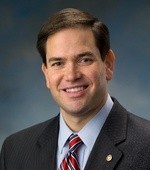
Wikimedia
Marco Rubio
Who is he? The outgoing senator from Florida also ran against Trump.
The scuttlebutt: Some of Rubio’s delegates to the convention are pushing him as a running mate. Trump says it “could happen,” though other reports claim he’s out of the running. Also Rubio has said, “I’m not going to be anybody’s vice president.”
Pros: All the things that Rubio was supposed to bring to the presidential race, he could still bring: youth. Charisma. Hispanic roots and foreign-policy experience, both of which Trump badly needs.
Cons: Rubio hit Trump hard during the race, and he seems to be pretty burnt out on campaigning and politics in general.
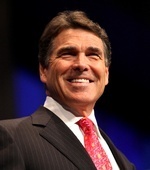
Gage Skidmore
Rick Perry
Who is he? The former governor of Texas ran for president unsuccessfully in 2012 and 2016.
The scuttlebutt: On May 5, Perry told CNN, “I believe in the process, and the process has said Donald Trump will be our nominee and I'm going to support him and help him and do what I can …. He is one of the most talented people who has ever run for the president I have ever seen.” On the veep question, he said, “I am going to be open to any way I can help. I am not going to say no.”
Pros: Perry doesn’t exactly have a reputation as a policy whiz, though he tried to reverse that in his second go at the presidency. He’s a steady, experienced Republican, and his Texas bravado might pair well with Trump’s New York braggadocio.
Cons: “He offers a barking carnival act that can be best described as Trumpism: a toxic mix of demagoguery, mean-spiritedness and nonsense that will lead the Republican Party to perdition if pursued. Let no one be mistaken—Donald Trump’s candidacy is a cancer on conservatism, and it must be clearly diagnosed, excised, and discarded.” —Perry on July 22, 2015
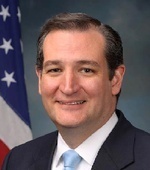
Wikimedia
Ted Cruz
Who is he? Trump’s final serious rival for the nomination, he’s a senator from Texas.
The scuttlebutt: Trump said on May 4 that he’d consider Cruz.
Pros: Trump says he wants to unify the party, and since the final split was ultimately between Cruz and Trump, what better way to bring together two factions than in a classic fusion ticket? Cruz would bring his very conservative bonafides to the ticket.
Cons: Many leading Republicans hate Cruz as much or more than they do Trump. Also, while the two men got along well early in the campaign, Cruz unloaded on Trump—understandably—after Trump suggested Cruz’s father was involved in the JFK assassination, calling him a “pathological liar,” “utterly amoral,” a “narcissist,” and “serial philanderer.”
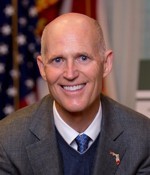
Wikimedia
Rick Scott
Who is he? Florida’s governor, Scott is a former health-care executive.
The scuttlebutt: Scott endorsed Trump on March 15. He’s suggested he’s not interested in the gig. “I like my job. I worked hard to get this job. I’m going to stay in this job,” he told CNN.
Pros: He’s a two-term governor, and Florida is an important swing state
Cons: Scott is deeply unpopular in his own state, and he carries lots of baggage—particularly a $1.7 billion fine for Medicare fraud levied on the company he ran.
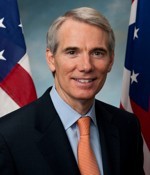
Wikimedia
Rob Portman
Who is he? Portman is a senator from Ohio.
The scuttlebutt: Trump’s campaign has leaked his name as an early favorite. A spokesman said Portman is not interested: “Rob is not interested in anything but continuing to serve Ohio in the U.S. Senate.”
Pros: Portman is well-liked and has a reputation for seriousness. He might help Trump in the crucial swing state of Ohio and across the Midwest. Barry Bennett, a longtime Portman aide, is now a top aide to Trump.
Cons: Portman is in the middle of a heated Senate campaign. He’d probably be unable to run for president and run for Senate effectively without risking handing the seat to Democrat Ted Strickland.
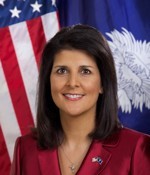
Wikimedia
Nikki Haley
Who is she? Haley is the governor of South Carolina.
The scuttlebutt: Trump’s campaign has named her as a top early pick, but Trump himself said, “No, not Nikki Haley, no Nikki Haley no, she wasn’t under consideration.” She herself said, “My plate is full and I am not interested in serving as vice president."
Pros: Not only is Haley a veteran governor, but as a woman, a Southerner, and a daughter of immigrants, Haley would plug lots of holes for Trump. She won positive national press by backing the push to take down the Confederate flag from the capitol grounds in Columbia.
Cons: Haley and Trump tangled ahead of the South Carolina primary, which Haley ultimately deploying the ultimate, vicious Southern insult on Trump: “Bless your heart.”
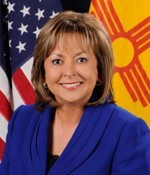
Wikimedia
Susana Martinez
Who is she? The governor of New Mexico, Martinez is a perennial long-list candidate for the vice presidency.
The scuttlebutt: She’s another one of the early favorites leaked by the Trump campaign. “The governor has said repeatedly over the years that she isn’t interested in serving as Vice President,” her spokesman replied. “She appreciates that such attention puts New Mexico in the spotlight, but she is fully committed to serving the people of our state.”
Pros: In addition to her experience as governor, Martinez is a woman and a Hispanic, both constituencies with which Trump is very weak.
Cons: Martinez has been harshly critical of Trump. She also brings some personal baggage.
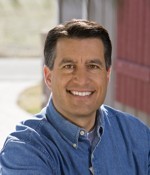
Wikimedia
Brian Sandoval
Who is he? Sandoval is the governor of Nevada, a moderate Republican and another perennial VP possibility.
The scuttlebutt: Remember when this guy was floated as an Obama Supreme Court nominee? Good times. Sandoval’s name seems to mostly be in the mix because it always is. He endorsed Trump on May 5.
Pros: Sandoval is an experienced politician and a popular Hispanic elected official. He could potentially help Trump with Hispanics and in the West.
Cons: Sandoval has sometimes been seen as too moderate for a national GOP ticket.

Evan Agostini / Invision / AP
Joe Scarborough
Who is he? The co-host of MSNBC’s Morning Joe, Scarborough previously served as a congressman from Florida.
The scuttlebutt: Scarborough has been one of Trump’s biggest cheerleaders in the mainstream media. When Hugh Hewitt asked him if in January he’d serve as Trump’s VP, Scarborough couldn’t bring himself to say no. He’s clearly thirsty to get back into politics—he even flirted with running for president in 2016.
Pros: Scarborough has media savvy and has had a great rapport with Trump. He’s not a professional politician these days, but he’s got the resume.
Cons: Precisely which GOP voters would line up to back a Beltway-dwelling, moderate Republican MSNBC host? Meanwhile, Scarborough has complained that Trump was genuine rather than simply pandering in his fearmongering on Muslims, and Trump fired back at him.
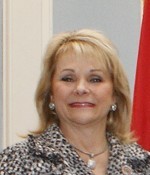
Michael Vadon / Flickr
Mary Fallin
Who is she? Fallin is the second-term governor of Oklahoma.
The scuttlebutt: Trump backer of Andre Bauer of South Carolina floated her name in April; Trump responded that it was “great” advice. She says she is “100 percent behind him” and said in a statement, “I have not had any direct contact with Mr. Trump, but I would be very honored if I were to receive a call saying I need you to help make America great again.”
Pros: Fallin is an experience governor and a woman.
Cons: She’s not much of a proven quantity or familiar face at a national level.

Where Republicans Stand on Donald Trump: A Cheat Sheet

How do you solve a problem like The Donald? For Republicans and conservatives, the time for hoping Trump would simply burn himself out, collapse, and go away is over. With the exits of Ted Cruz and John Kasich, the entertainer is now the presumptive GOP nominee.
That poses a dilemma for the Republican official or conservative opinionmaker who doesn’t like Trump, disagrees with his policies, and/or thinks he will harm GOP and the conservative movement. Swallow hard and back Trump? Try to coalesce around a third-party candidate? Sit out the election and risk allowing Hillary Clinton to win the presidency, or even back her rather than risk letting Trump win?
As the chaotic and failed attempts to stop Trump over the 10 months have shown, there’s no obviously right choice. But which choice are people making? Here’s a list of some major figures and where they stand on Trump—right now. We’ll keep it updated as other important people take stances, or as these ones change their views about Trump.
Party Elders

Jason Reed/ Reuters
George W. Bush: ABSTAIN
The former president “does not plan to participate in or comment on the presidential campaign,” an aide told the Texas Tribune. (May 4, 2016)
George H.W. Bush: ABSTAIN
“At age 91, President Bush is retired from politics. He came out of retirement to do a few things for Jeb, but those were the exceptions that proved the rule,” an aide told the Texas Tribune. (May 4, 2016)
Mitt Romney: NAY
The party’s 2012 nominee—and one of Trump’s staunchest critics during the primary—told The Washington Post he would skip the Republican National Convention in Cleveland, and said at a D.C. dinner that he won’t be supporting Trump. (May 5, 2016)
Bob Dole: UNDECIDED
The former Senate majority leader and 1996 GOP presidential nominee will be the only living GOP nominee to attend the RNC. He hasn’t committed to voting for Trump but said in January that Trump would be preferable to Cruz. (May 5, 2016)
John Boehner: YEA
The former speaker, who says he and Trump are “texting buddies,” told an audience at Stanford University that he’d back Trump in the general election. (April 28, 2016)
Trent Lott: YEA
The former Senate majority leader told The Clarion-Ledger that he will back Trump, despite some reservations. (May 4, 2016)
Tom DeLay: UNDECIDED
The former House majority leader hasn’t spoken out since Trump’s ascension, but was highly critical of him during the primary: “We have got to stop Trump. Whatever it takes without cheating or violating the rules of the Republican primaries,” he told Newsmax.
Dick Cheney: YEA
The former vice president blasted Trump during the primary over his stance on 9/11, and said he “sounds like a liberal Democrat,” but he now says he will back the nominee. (May 6, 2016)
Newt Gingrich: YEA
The former speaker of the House did not formally endorse Trump during the primary, but he has repeatedly praised the mogul and his vision, and is said to be a contender for a position in a Trump administration.
Jeb Bush: NAY
The former Florida governor and presidential candidate came to detest Trump during the campaign. In April, he said he would not attend the Republican National Convention. He now says he will not vote for either Trump or Clinton. (May 6, 2016)
Reince Priebus: YEA
As chair of the Republican National Committee, Priebus doesn't really have a choice, though that doesn’t mean he won’t pour Baileys in his cereal over it. (May 4, 2016)
.@realDonaldTrump will be presumptive @GOP nominee, we all need to unite and focus on defeating @HillaryClinton #NeverClinton
— Reince Priebus (@Reince) May 4, 2016
Priebus said on May 6 that Trump needs to change his tone.
Rick Perry: YEA
The former Texas governor and presidential candidate—who was one of the first to blast Trump—told CNN that he backs Trump. (5/5/16)
Mike Huckabee: YEA
The former Arkansas governor, who ran for president this year, says Republicans should get in line. “When we nominated people over the past several election cycles, some of us had heartburn, but we stepped up and supported the nominee,” he said. “You’re either on the team, or you’re not on the team.” (May 5, 2016)
Representatives

Jonathan Ernst / Reuters
Paul Ryan: UNDECIDED
The House speaker has said in the past he intended to support the Republican nominee, but he now says he’s not prepared to back Trump—yet. “To be perfectly candid with you, I’m just not ready to that at this point,” he told CNN’s Jake Tapper. “I’m not there. I hope to, and I want to.” He said the party needs “a standard-bearer that bears our standards.” (May 5, 2016)
Cathy McMorris Rodgers: UNDECIDED
The Washington representative, who is chair of the House Republican Caucus, has not made up her mind. “Before I endorse him, I would like to have a conversation with him. I would like to ask him questions about some of the statements he’s made,” she told The Spokesman-Review. (May 5, 2016)
Senators

Yuri Gripas / Reuters
Mitch McConnell: YEA
The Senate majority leader issued a statement tepidly backing Trump. “I have committed to supporting the nominee chosen by Republican voters, and Donald Trump, the presumptive nominee is now on the verge of clinching that nomination,” he said. (May 4, 2016)
Ted Cruz: UNDECIDED
In dropping out of the Republican race after losing to Trump, the Texas senator did not make any indication whether he was willing to back his rival. (May 3, 2016)
Jeff Sessions: YEA
The Alabama senator was Trump’s first endorser from the Senate, and he has been a high-profile backer and adviser to Trump’s campaign.
Susan Collins: UNDECIDED
The Maine senator and moderate said, “I have always supported the Republican nominee for president, and I suspect I would do so this year, but I do want see what Donald Trump does from here on out.” To win her vote, “He’s going to have stop with gratuitous personal insults,” she said, amusingly. (May 4, 2016)
John McCain: YEA
The Arizona senator and 2008 GOP presidential nominee, who is in a tight reelection battle, says publicly that he’ll back the nominee. In a private recording obtained by Politico, however, he frets that Trump endangers his reelection effort, while his former top aide Mark Salter is backing Clinton. (May 5, 2016)
Kelly Ayotte: YEA
The New Hampshire senator, who is also in a tight reelection battle, says she plans to “support” but not “endorse” Trump, whatever that means. (May 5, 2016)
Rand Paul: YEA
The Kentucky senator and former presidential candidate says he will support Trump. (His father, ex-congressman and presidential contender Ron Paul, says he will not.) (May 4, 2016)
Lindsey Graham: NAY
The South Carolina senator and former presidential candidate was one of Trump’s most prominent critics during the primary, even endorsing Cruz even though he’d previously likened the choice between him and Trump to a choice between poisoning and being shot. The day Trump won Indiana, Graham tweeted:
If we nominate Trump, we will get destroyed.......and we will deserve it.
— Lindsey Graham (@LindseyGrahamSC) May 3, 2016
Graham says he will not vote for either Trump or Clinton. (May 6, 2016)
Ben Sasse: NAY
The Nebraska freshman senator was another anti-Trump ringleader, and has been suggested as a third-party candidate. In a long Facebook post, he explained why he’s still not backing Trump. (May 4, 2016)
Marco Rubio: YEA
The Florida senator and former presidential candidate has not spoken about the race since Trump became the presumptive nominee, but in late April he said that he’d support Trump in order to beat Hillary Clinton. (April 21, 2016)
Rob Portman: YEA
The Ohio senator, who’s locked in a tough reelection fight, has previously said he’d back the Republican nominee. Most recently, he said that having Trump on the ticket would be positive for his own hopes. (May 5, 2016)
Richard Burr: YEA
The North Carolinian, who also faces a tough reelection, supports Trump. (May 4, 2016)
2/3: I look forward to working with Mr. Trump at the top of the ticket and to maintaining a #GOP Senate.
— Richard Burr (@Burrforsenate) May 4, 2016
Roy Blunt: YEA
The Missourian, who is up for reelection, says he will support the nominee. (May, 5, 2016)
Ron Johnson: YEA
The Wisconsin senator, who is battling predecessor Russ Feingold, is one of the most precarious Republicans this year. He tepidly backed Trump. “As Ron has repeatedly said for months, he intends to support the Republican nominee, but he's focused on the concerns of Wisconsinites—not national political winds,” a spokesman told Roll Call. (May 5, 2016)
Pat Toomey: YEA
The Pennsylvania senator, another endangered incumbent, said: “It certainly looks like Donald Trump is on his way to the nomination .… Donald Trump was not my first choice. He wasn’t my second choice or third or fourth choice. I have lots have differences with Donald Trump and lots of problems with him but I am absolutely in the ‘never Hillary Clinton’ camp.” (May 4, 2016)
Mark Kirk: YEA
The Illinois senator, one of this year’s most endangered incumbents, has previously said he’d back Trump if nominated.
Governors

Chris Keane / Reuters
Chris Christie: YEA
The New Jersey governor and former presidential candidate was Trump’s first major establishment endorser, and has been a staunch ally.
Paul LePage: YEA
Maine’s sometimes-racist governor had backed Christie, but he quickly endorsed Trump after Christie did.
John Kasich: UNDECIDED
The Ohio governor and final Republican challenger to leave the race has not said whether he’ll back Trump. In his comments leaving the race, Kasich pointedly did not mention Trump or indicate his leaning. (May 4, 2016)
Nikki Haley: YEA
The governor of South Carolina tangled with Trump ahead of that state’s primary, and was elegantly withering toward him at the time. But she says she will back him. “I have great respect for the will of the people, and as I have always said, I will support the Republican nominee for president,” she said. (May 4, 2016)
Brian Sandoval: YEA
The Nevada governor, a moderate conservative, was no fan of Trump but will back him. “I plan to vote for the presumptive nominee although it is no secret that we do not agree on every issue. Elections are about making choices and the Democratic nominee is simply not an option,” he wrote on Facebook. (May 5, 2016)
Pete Ricketts: YEA
The Nebraska governor will back Trump. That’s a bit of a surprise because Ricketts’ father, mother, and brother were among the leading bankrollers of anti-Trump initiatives. Trump threatened them in February, tweeting, “They better be careful, they have a lot to hide!” (May 5, 2016)
Mike Pence: YEA
The Indiana governor and social conservative cautiously endorsed Cruz ahead of the Hoosier State primary, but he’s now on the Trump train. “I’m fully supportive of our presumptive nominee, and I do think Donald Trump will do well in the State of Indiana,” he said. (May 6, 2016)
Charlie Baker: NAY
The moderate Massachusetts governor told reporters he would not vote for Trump and doubted he’d vote for Clinton. Later the same day, a spokeswoman clarified to The Boston Globe: “Governor Baker will not be voting for Donald Trump or Hillary Clinton.” (May 4, 2016)
Pundits and Opinionmakers

Micah Walter / Reuters
Bill Kristol: SOFT NAY
The editor of The Weekly Standard threw his lot in with the #NeverTrump crowd with gusto, and he’s been a leading advocate for a third-party alternative. But these days, he seems a bit confused about what exactly the word “never” means: “I mean, I guess never say never. On the one hand, I’ll say #NeverTrump, and on the other hand, I’ll say never say never. I'll leave it ambiguous.” (May 2, 2016)
Ross Douthat: APPARENT NAY
After spending the primary alternately criticizing Trump and forecasting his doom, the New York Times columnist seems especially dyspeptic and despairing. (May 5, 2016)
Erick Erickson: NAY
The radio host, editor of The Resurgent, and former RedState editor writes: “Hillary Clinton is unfit for the Presidency, but so is Donald Trump. Some Republicans may decide it is time to be a team player, but I will put my country before my party and decline to help the voters in this country commit national suicide.” (May 4, 2016)
Leon Wolf: NAY
Wolf, the editor of RedState, has been a prominent Trump critic. He says he’s leaning toward voting for a Libertarian candidate. “I genuinely believe that Hillary Clinton would be a better President than Trump, and it’s not close,” he wrote. “That said, Hillary would also be a terrible President, there’s no doubt about that.” He also called on Senate Republicans to confirm Merrick Garland, President Obama’s Supreme Court nominee, lest Trump do the choosing instead. (May 4, 2016)
Ann Coulter: YEA
Coulter has been a fanatical backer of Trump for months.
George Will: NAY
The dean of conservative columnists detests Trump, and has called for Republicans to defeat him if he is their nominee: “Were he to be nominated, conservatives would have two tasks. One would be to help him lose 50 states—condign punishment for his comprehensive disdain for conservative essentials, including the manners and grace that should lubricate the nation’s civic life.” (April 29, 2016)
Charles Krauthammer: SOFT NAY
The leading writer has been very critical of Trump, but in an interview with Bill O’Reilly, he left the door ajar to change his mind. “Let me just say from what I’ve seen up until now, heard from Trump and watched him, I don’t think I’d be capable of voting for Donald Trump,” he said. “Question is, what do I do? I don’t know yet.” (May 3, 2016)
Bill O’Reilly: APPARENT YEA
Without officially stating his support, the Fox News personality has repeatedly defended Trump. (May 5, 2016)
Sean Hannity: YEA
Hannity has been one of Trump’s two most reliable cheerleaders in the media.
Matt Drudge: YEA
The publisher of the Drudge Report has been, along with Hannity, Trump’s best friend in the press.
Sarah Palin: YEA
The former Alaska governor and vice-presidential candidate endorsed Trump with a Dadaist address to Iowans in January, and she’s stumped for him since.
The Wall Street Journal Editorial Board: SOFT YEA
The editors of the nation’s most powerful conservative editorial board are not fans of Trump’s, but they are resigned. “Mr. Trump wasn’t our first choice, or even the 15th, but the reality is that more GOP voters preferred him to the alternatives,” they wrote. “Yet GOP voters made the ultimate decision, and that deserves some respect unless we’re going to give up on democracy.” The board also criticized the move for a thirty-party candidate, irking Bill Kristol.
Joe Scarborough: SOFT YEA
The MSNBC host and token network conservative has been among the friendliest voices in the media toward Trump. Now he says he’s not sure whether he can vote for Trump, citing Trump sticking to outlandish promises like a ban on Muslim immigration that he made during the primary. (May 5, 2016)
Rush Limbaugh: YEA
The leading right-wing talk-show host has been a booster of Trump all along—to the agitation of Trump-opposing conservatives—despite occasionally criticizing him. After Trump’s Indiana win, Limbaugh predicted: “My instinctive feeling right now is that Trump is gonna win, beat Hillary badly, that it could be landslide proportions.” (May 4, 2016)
Glenn Beck: NAY
Beck, the talker who was a Cruz backer, has remained steadfastly opposed to Trump since he became the presumptive nominee. He says Trump cannot win. “I don’t want my children to look at that man and say, ‘Yeah, he’s my President.’ I won’t have that. I will not endorse it, I will not tolerate it,” he said. (May 4, 2016)
Rupert Murdoch: YEA
The hugely influential conservative mogul—owner of The Wall Street Journal, Fox News, and the New York Post—suggested in March that the Republican Party coalesce around Trump:
As predicted, Trump reaching out to make peace with Republican "establishment". If he becomes inevitable party would be mad not to unify.
— Rupert Murdoch (@rupertmurdoch) March 2, 2016
The coverage of Trump late in the primary led Ted Cruz to lash out and accuse Murdoch & Co. of aiding Trump.
Donors

Tyrone Siu / Reuters
Sheldon Adelson: YEA
The Vegas-based megadonor, and major advocate for Israel, may have been perturbed by Trump’s statements about the Jewish state during the campaign, but he told The New York Times he’s supporting him. “Yes, I’m a Republican, he’s a Republican,” he said. “He’s our nominee. Whoever the nominee would turn out to be, any one of the 17—he was one of the 17. He won fair and square.” (May 5, 2016)
Paul Singer: NAY
The major Republican donor, who backed Marco Rubio and contributed to anti-Trump efforts, will not back Trump, NBC News reported. Bloomberg reported he’ll stay out of the presidential race. (May 5, 2016)
Joe and Marlene Ricketts: UNDECIDED
The billionaire couple, who own the Chicago Cubs, spent at least $5.5 million on anti-Trump efforts during the primary, and Trump at one point threatened them, tweeting, “They better be careful, they have a lot to hide!” They have not made their stance public, though their son Pete, the governor of Nebraska, has endorsed Trump.
Charles and David Koch: SOFT NAY
Prior to Trump’s becoming the presumptive GOP nominee, Charles Koch said he thought Hillary Clinton might be a better president than Trump, though he made no indication that the famed pair of brothers would back her. They now say they are not backing Trump, though a spokesman did not rule it out entirely. (May 5, 2016)
Faith Leaders
Jerry Falwell Jr.: YEA
Falwell, president of Liberty University and son of the iconic Moral Majority leader, has been one of Trump’s staunchest backers.
Russell Moore: NAY
Moore, who is president of the Ethics and Religious Liberty Commission of the Southern Baptist Convention, says he will not vote for either Trump or Clinton but will write in Ben Sasse. (May 5, 2016)

Another Blow Against Turkish Journalism

A court in Istanbul sentenced journalist Erdem Gul to five years in prison and his colleague Can Dundar to five years and 10 months for revealing state secrets. Hours before the verdict, a gunman tried to kill Dundar outside the courthouse as he spoke to reporters. He was not injured and the gunman was arrested.
The very moment gunman shot at #Turkey newspaper editor outside court house. The brave woman is journalist's wife. pic.twitter.com/qYnhnf4Gs8
— IrmakYenisehirlioglu (@Irmak_Ye) May 6, 2016
As we have previously reported, Dundar is the editor of Cumhuriyet and Gul, its Ankara bureau chief. Their newspaper published a story in May 2015 that alleged Turkey was shipping arms to Islamists in Syria. The government was incensed and Recep Tayyip Erdogan, the Turkish leader, said: “The person who wrote this news shall pay a heavy price for it, I won’t just let it go.” The two journalists were arrested last November and charged with espionage and revealing state secrets. The journalists denied the charges against them.
On Friday, the Turkish court found them guilty of revealing state secrets, but not guilty of the more serious charge, espionage, which carried a possible life sentence. They’ve said they will appeal the guilty verdict—and will remain free pending appeal.
Their prosecution has been criticized by journalism-watchdog groups, with the Committee to Protect Journalists calling the verdict “unjust.”

Is it an Immigration Detention Facility or a Child-Care Center?

The largest immigration detention center in the United States has a gym with Zumba classes, a beauty salon, playgrounds, and a school for kids. It also has barracks-style housing and the tall chainlink fencing of a prison.
The U.S. has three family detention centers, used to hold migrant children and their mothers as they apply for asylum, and the two largest are in Texas. One is in Dilley, the other in Karnes. They’re both dusty towns between San Antonio and the Mexican border, and together they have about 3,500 beds.
The facilities have been at the center of a legal fight in Texas courts this week. The issue is whether one of these centers could or should be considered a child-care facility. The Obama administration has tried to get Texas to grant its Karnes County Residential Center a child-care license, arguing that the designation would serve in the best interest of immigrant children, who are held there as they’re screened for asylum. But immigration advocates hope to shut down the centers, which they view as prisons––or at the very least, they want the children released. This strange-sounding struggle over a label is about legal semantics, but it’s also about how the U.S. chooses and is allowed to treat migrant children.
In 2014, an unprecedented surge of migrant families from Central America crossed the U.S.-Mexico border. Although detention centers had been used long before this, that year the Obama administration made them key to its immigration policy. Dilley was built that year, and Karnes was greatly expanded. Immigration advocates fought back, and last year in the Federal District Court for the Central District of California, Judge Dolly Gee made a ruling that helped their case. In her decision last July, the judge said the centers were in “deplorable” condition, and that they failed to meet even minimal standards. Gee pointed to a 1997 ruling that determined the government cannot treat a child in detention as it would an adult. She ordered the Obama administration to release the migrant kids from both Texas centers.
That didn’t happen. The Obama administration appealed, and for the past year has tried to figure out how to get around the ruling. In December, Texas held a public hearing about whether it could issue detention centers a childcare license. At the meeting, Paul Morris, who’s in charge of issuing the licenses on behalf of the Texas Department of Family and Protective Services, told the crowd, “My staff would make periodic inspections of the facilities. They would investigate any allegations of abuse and neglect and any other alleged violations of minimum standards.”
That’s largely how the government has framed the need for the license. Immigration and Customs Enforcement—the federal agency that oversees the private company that runs Karnes facility—has said it’s an “important step forward in ICE’s commitment to enhancing oversight and transparency.”
But an Austin-based immigration attorney at the meeting, Virginia Raymond, called the idea “an insult to the common sense of the people of Texas.”
The Karnes center’s inspection report, filed in March of this year and obtained by The Texas Observer, showed six “deficiencies” in operations, including an unattended child, an unqualified employee, and no record-keeping of children’s allergies. But Texas said it met childcare standards anyway.
Then last week, the administration got a win when Texas issued the Karnes center the license. This week, Grassroots Leadership, a nonprofit that advocates against private ownership and operation of prison and detention centers, sued the state. A day later, a judge in Austin blocked the child-care license, putting it on hold until advocates and the government could sort it out in a hearing on May 13.
“By all reasonable measures, family detention camps are prisons,” said Bob Libal, the executive director of Grassroots Leadership. Another nonprofit’s executive director likened the idea of calling them childcare facilities to putting lipstick on a pig.
Part of the problem advocates take with the detention center looking after children has been one of image, and Obama has recently tried to clean that image up, especially after senators and members of Congress visited last June––some of whom later demanded they be shut down. It was that summer one former Karnes employee said security locked up migrant mothers who spoke out about the conditions. She said a psychologist worked as an informant for federal agents, and that her bosses regularly asked her to omit complaints to hide them from government audits. In early 2015 and again in December 2015, migrants at the center went on hunger strikes.
Carlos Holguin, of the Center for Human Rights and Constitutional Law, wrote this last year about his trip to the Karnes center:
We passed through one door, it closed behind us; we were then directed to display our visitor’s badges to a guard behind heavy glass; the second door was opened, we walked through, and we then reached the interior of the facility. The Karnes facility is constructed of concrete block. A staff member stated the facility had been designed to house adult male prisoners. . . . In the central open area I saw neither a direct view nor access to the outside: it was effectively surrounded by the high block walks of the facility itself, denying those inside any means of ingress or egress except via the secure entrance I earlier described. Facility staff stated that children detained at Karnes have never been permitted outside the facility to go to the park, library, museum, or other public places. Children attend school exclusively within the walls of the facility itself. Detainees, including children, are required to participate in a “census” or headcount three times daily.
The average stay in a similar detention center in Dilley, Texas, was 22 days in 2015––though some have been kept a year. There, more than half of the migrants are children. Their average age is nine.
ICE does have an alternative to detention that allows migrants to live in communities with relatives. The program often involves regular check-ins with immigration agents and sometimes an ankle monitor. It’s less expensive for the government ($17 a day, compared with the $159 that detention costs each day) and is very effective making sure migrants come to their court dates. But, the administration would argue, nothing is more effective for ensuring a person shows up to court than holding someone inside cement walls.
According to the latest numbers from Customs and Border Patrol, for the first six months of fiscal year 2016, which ended in March, agents caught almost 28,000 unaccompanied children trying to cross the border. That is a 78 percent increase from 2015. The number is nearly equal to the immigration surge of 2014, which Obama called an “urgent humanitarian situation.”
This summer, when immigration picks up as it does every year in the warmer months, the migrant children and their families who cross the border will need to be processed. And because the U.S. has increasingly dealt with this by holding them in detention centers, they will need somewhere to stay. Many will end up in Texas detention centers, in squat barracks with a gym and a playground, ringed with chainlink or cement walls. At least one of those facilities may be a licensed child-care center.

Why ‘John Doe’ Released the Panama Papers

A person purportedly behind the Panama Papers leaks on Friday lambasted economic systems that have allowed offshore shell accounts to prosper for so long.
Known only as John Doe, the person explained in a lengthy statement to the International Consortium of Investigative Journalists, the group of news outlets that reported out the Panama Papers last month, and Süddeutsche Zeitun, the German newspaper, why Mossack Fonseca, the Panamanian law firm that has set up accounts for the world’s rich, was targeted:
“I decided to expose Mossack Fonseca because I thought its founders, employees and clients should have to answer for their roles in these crimes, only some of which have come to light thus far. It will take years, possibly decades, for the full extent of the firm’s sordid acts to become known.”
The person also called on the United States, the European Union, and the United Kingdom to enact new laws that go after corporate shells and protect whistleblowers. (S)he writes:
“In the European Union, every member state’s corporate register should be freely accessible, with detailed data plainly available on ultimate beneficial owners. The United Kingdom can be proud of its domestic initiatives thus far, but it still has a vital role to play by ending financial secrecy on its various island territories, which are unquestionably the cornerstone of institutional corruption worldwide. And the United States can clearly no longer trust its fifty states to make sound decisions about their own corporate data. It is long past time for Congress to step in and force transparency by setting standards for disclosure and public access.”
(S)he also criticized news organizations that didn’t show an interest in the papers. The person adds, “Even Wikileaks didn’t answer its tip line repeatedly”—significant considering Wikileaks previously claimed the leaks were funded by the U.S. government.
On Monday, ICIJ says it will make much of its information available through a public database. Quartz writes:
In most cases it will not be the actual documents, but rather the names of shell companies and beneficial owners that can be gleaned from the files.
More details from the documents are due next Monday.

Zimbabwe’s Own U.S. Dollar Bills

Zimbabwe is running out of cash and needs to print more money—so its central bank will print a new currency pegged to the U.S. dollar. The move has led to fears that the southeast African nation will soon abandon its multicurrency system and return to the hated local currency.
Zimbabwe has used the U.S. dollar since 2009 to substitute its own failed money, the Zimbabwe dollar. It also uses the South African rand, the euro, and the Chinese yuan, alongside the dollar. However, because Zimbabwe has run a trade deficit for several years, importing more than it exports, the country is literally running out of paper money.
In 2015, for example, it imported $5.5 billion in goods and only exported $2.5 billion. (The country’s economic problems are so bad it even had to sell off some of its wildlife.) That $3 billion trade deficit means the country’s supply of physical dollars continues to decrease. Zimbabweans can’t withdraw money from the bank because there isn’t enough of it—and banks have limited withdrawals at some ATMs.
To combat the shortage, Zimbabwe’s central bank will design and circulate new two-, five-, 10-, and 20-dollar “bond notes” that will be worth the equivalent of the U.S. dollar, but won’t actually be certified American currency.
Those notes won’t be worthless, however. Zimbabwe’s version of the dollar will be backed by $200 million in support from the African Export-Import Bank, a Cairo-based institution that promotes trade within the continent. Zimbabwe, then, will produce $200 million worth of new bills.
Among other measures announced this week to address the monetary problems: Officials have limited the amount of money that people can take out of the country to $1,000; and the central bank will convert 40 percent of all bank deposits that come from exports to the South African rand, and an additional 10 percent to euros.
The dollar is used as the official currency in other countries, as well. El Salvador, the Marshall Islands, the Federated States of Micronesia, Palau, and the islands of the Caribbean Netherlands—Bonaire, Sint Eustatius, and Saba—all use the dollar as their official currency.
Other countries have also adopted the dollar as their currency, but issued their own coins that are valued the same as American dimes, quarters, or nickels. Panama, East Timor, and Ecuador use American paper money, alongside their own individual coins. Similarly, since 2014, Zimbabwe has designed and circulated one-, five-, 10-, and 25-cent “bond coins” that are set to the value of the U.S. dollar. The coins bear little resemblance to their American counterparts. Zimbabwe’s new paper money will be made in the same vein.
Zimbabwe made the switch to the U.S. dollar in 2009 after its currency virtually had no value from over-printing and its economy collapsed following policies instituted by the government of longtime President Robert Mugabe. During that period, Zimbabwe produced 100-trillion-dollar notes. It got so bad that by the end of 2008, the inflation rate was 79.6 billion percent. By then, 1 U.S. dollar equated to 2.6 decillion (1033) Zimbabwean dollars.
Seven years later, the country isn’t facing hyperinflation, where there’s too much currency, but deflation, as there’s not enough physical cash around.
“It’s an indication of the lack of confidence in the Zimbabwean Central Bank,” says Russell Green, an international economics fellow at Rice University’s Baker Institution. “They want to print their own money, but they know that they’ve gotten in trouble in the past printing their own money.”
The absorption of the U.S. dollar as a country’s own currency, or even the attachment of its currency rate to the dollar, has previously proved perilous to other countries. Argentina’s peso had a fixed exchange rate to the U.S. dollar, and for a decade every one peso was equivalent to one dollar. However, after an economic depression that lasted from 1998 to 2002, which led to the fall of the government and a $95 billion default on its foreign debt, Argentina dropped the fixed exchange rate. Argentina’s central bank ran out of money during that time.
“The problem that all of these countries have, whether it’s with a complete dollarization or with a pegged currency, is if they’re running persistent trade deficits, eventually you run out of the foreign currency,” Green says. “That’s unfortunately Zimbabwe’s case.”
Keeping the dollar may not be a worthwhile option for Zimbabwe moving forward if it continues to need to print more money with the support of outside institutions. It may even have to go back to its old currency—a move many Zimbabweans fear.

A Bigger Splash: A Dark, Sensuous Romantic Drama

A Bigger Splash seems to announce its intentions from minute one, cutting from the rockstar Marianne Lane (Tilda Swinton) electrifying a stadium of thousands to a shot of her sunbathing nude by a pool in an Italian villa. Here, it appears, is a movie about the glamorous life of a celebrity, and the consequences therein. But Luca Guadagnino’s new film comes into sharper focus much later, as the viewer realizes Europe’s ongoing migrant crisis is playing out in the background, largely ignored by the high-wattage ensemble until it becomes impossible not to.
A Bigger Splash is a sensuous delight of a film, but it has a darker heart that brands itself in the viewer’s mind. Like Guadagnino’s last film, the 2009 drama I Am Love, A Bigger Splash is filled with beautiful things to look at, from the cast to the striking landscape. It’s a loose adaptation of Jacques Deray’s 1969 French film La Piscine, a provocative potboiler set on the French Riviera, but Guadagnino moves his story to the remote Italian island of Pantelleria, a balmy paradise being inundated with groups fleeing crises in Africa and Asia. Though it starts out as an energetic romantic yarn, following the struggles for Marianne’s affection between her boyfriend Paul (Matthias Schoenaerts) and her old flame Harry (Ralph Fiennes), it becomes a far more engrossing film when it breaks out of its reverie and confronts the ugliness both within the villa and without.
The story is less a love triangle than a love rhombus, and the plot kicks off when Harry and his daughter Penelope (Dakota Johnson) crash Marianne and Paul’s island looking to make trouble. Guadagnino charts the building tension as Harry and Paul jockey for Marianne’s attention, though Penelope also wedges herself into the action. Harry, a parody of a coked-up ’80s record producer who still manages to feel like a real person, is creepily close to his daughter, a gorgeous poolside temptress he claims to have met as a grown-up. Fiennes’s performance is exhilarating and exhausting in equal measure, a jolt of fun for a film that’s mostly about characters who want to languidly relax by the pool and make eyes at each other. Paul is both quieter and hunkier, played by the French up-and-comer Schoenaerts, a champion brooder who excelled at the task in last year’s Far From the Madding Crowd.
Caught in the middle is Swinton, who was electrifying in Guadagnino’s I Am Love. In A Bigger Splash, Marianne has undergone some sort of vocal surgery that makes it impossible for her to speak beyond an occasional whisper. It’s a dazzling experiment for Swinton, who’s slipped into so many strange skins in recent years—a Thatcher-esque dictator in Snowpiercer, rival twin gossip columnists in Hail, Caesar!, a bored vampire queen in Only Lovers Left Alive. She more than rises to the challenge of a dialogue-free starring role, communicating her longing for both partners in subtly calibrated facial expressions.
A Bigger Splash is mostly light and airy for its two-hour running time, until Harry and Paul’s tussling grows more heated and claustrophobia takes over. But discord lurks on the edges of the film from the beginning, as Guadagnino and the writer David Kajganich hint at the influx of refugees to the island (and Italy at large), and the problems fermenting around this idyllic slice of life. At one point, Paul and Penelope go on a hike through the cliffs of Pantelleria, and run into a group of refugees doing the same, but for survival, rather than leisure. A tense standoff plays out even though neither side understands what the other is even doing there: The gulf between the holidaying party and the people around them is socially vast, but geographically tiny.
Though A Bigger Splash slides into more nakedly political territory in its final 30 minutes, the shift doesn’t feel jarring, but necessary—a chilling reminder of the heavy investment viewers have in the splashy lives of the rich, and our disinterest in the opposite. It’s a rare film that pulls off a Rules of the Game-style satire—portraying the lives of the wealthy and the famous to deliver a heavier social message—but it also manages to be an otherwise straightforward and enjoyable romantic drama. The sexual machinations of these beautiful people are easy to enjoy, but it’s just as satisfying when things all start tumbling down.

The Good Clothes

The Good Wife begins with a pair of suits. Two people, a man and a woman, walk down a long hallway, each clad in that classic costume of conformity. The woman’s suit is gray-and-black wool houndstooth, slightly boxy in cut, clasped with mother-of-pearl buttons; the man’s is black, with just a hint of white sleeve peeking out from under the arm. The faces in that first scene remain just out of frame; the suits’ fabrics swish and bunch, their folds and shadows exaggerated by the harsh lighting of a cavernous hall.
Related Story

Saying Goodbye to The Good Wife
Quickly, we learn that the faceless couple is Alicia and Peter Florrick, and that they’re on their way to the press conference in which he will announce his resignation as Cook County’s State’s Attorney, confess his repeated infidelity to his wife, and otherwise engage in the time-honored yet quintessentially modern ritual of the performative political apology. Alicia will stand beside him while he does all that, stoic and sad and exhausted, the rigidity of her pencil skirt and woolen jacket seeming to help her stay upright as the callous cameras flash. And then, abruptly, in the next scene—six months after the first one, the show informs us—we see her again. She is no longer pale. She is wearing a pantsuit instead of a skirt, and a jacket that is, unlike the first, perfectly tailored to her form. She is wearing stilettos. Actually, she is running in them.
The Good Wife, which ends its seven-season run on Sunday, is rightly celebrated not just for its nuance and its depth and its ability to fuse ripped-from-the-headlines news stories with the fates of its characters, but also for a more superficial achievement: clothing that is consistently awesome.
The show is one of a not terribly large cadre—among them Empire (Cookie!), Scandal (Olivia!), The Mindy Project, Mad Men, Sex and the City, Girls—that treat costuming as a matter not just of production, but of literary ambition. Alicia’s evolution as a character, from “the good wife” to “the good so-many-other-things,” is suggested by the evolution of her suits—a rough trajectory from Talbots to Tahari to Thakoon. The sartorial choices of her fellow protagonists—particularly the female ones—suggest a similar telegraphic aim. The Good Wife is a later-in-life bildungsroman, a televised reassurance that one can come of age at any age; its clothes reflect those evolutionary impulses.
The show’s costuming is overseen by Dan Lawson, who maintains an enormous closet for each major character (“300, 350 for Alicia,” he estimates, of the suits alone, “and probably 250 suits for Diane”). And the clothes he chooses for the show’s female characters, whether they’re worn by Alicia or Diane or even the singular Kalinda, tend to be united by shared impulses and styles: They favor designer brands, fuse masculine and feminine touches, make copious use of high heels, and are always precisely tailored to their wearers’ bodies. (This is an aesthetic choice that doubles as a pragmatic one: Baggier sleeves and A-line skirts—cuts that can add visual bulk in two dimensions—simply don’t work on camera, Lawson told The Huffington Post.)
What results is a uniformity of style that transcends the clothes’ minor variations (Diane’s brooches, Lucca’s love of bold patterns, Kalinda’s boots) and even its major ones (pantsuits versus skirt suits versus dresses). It results in the sartorial aesthetic that defines the show. I’ve come to think of it as, all in all, The Suit.
The suits worn in the show nod at once to capitalism’s individualistic impulses and its social demands.
As deployed by Lawson—and by Michelle and Robert King, The Good Wife’s vastly undercelebrated showrunners—The Suit suggests the thing that most any suit will, in its whiff of corporate uniformity: the marriage of capitalism’s individualistic impulses and its social demands. The Good Wife, unlike most of its fellow network dramas but very much like the “prestige dramas” on offer elsewhere, may be extremely suspicious of institutions, from the justice system to to law enforcement to organized politics to organized religion to marriage; what the show revels in, though, are the human-scale satisfactions of the communal endeavor. The cases won by Lockhart Gardner Stern, and later by Lockhart Gardner, and later by Florrick Agos, etc., are almost always won through the work of many, many people—lawyers, paralegals, investigators, DAs, “interested parties” of varying stripes—coming together at just the right moment.
And on the flip side: Many of the show’s most pernicious moments—Eli’s deleting of a voicemail, Alicia’s incremental betrayals of Will and Diane and Cary—come about as the result of a character going rogue. (Going Rogue itself, Sarah Palin’s work of self-promotional autobiography, comes in for repeated mockery during the show’s middle seasons.) And many of its most redeeming happen when characters act, sometimes at a sacrifice to their own interests, for a greater good.
The Suit, the literary style—by way of the suit, the sartorial one—suggests The Good Wife’s principled impulses. Notably, the suits on the show are not especially daring, as many of the iconic woman-worn suits of TV shows past have been (Ally McBeal’s micro-minis; Samantha Jones’s chest-revealing shirtless jackets). They are subtly performative, though. They represent a fusion of self-expression and self-abnegation, a beautiful, tailored collision of the individual and the collective. If the power suit of the ’80s and ’90s, donned by a woman, suggested the insistence of the women’s movement, The Suit of The Good Wife suggests its normalization.
Diane’s signature mix of menswear cuts and feminine details suggests a life lived as that most profound of cliches: “a woman in a man’s world.”
So when Diane shows up to work wearing her signature mix of menswear-style cuts and ultra-feminine details (scarves, bold colors and patterns, Albrightian statement brooches), that choice suggests the daily nuances of a life lived as that most profound of cliches: “a woman in a man’s world.” Kalinda’s blending of materials both hard and soft, both sexual and professional—leathers and silks, bustiers and blazers, those omnipresent over-the-knee boots—suggests both her complicated character and her attitude toward the world at large. Lucca’s penchant for bright, bold patterns—though relegated per the edicts of the show to the tailored confines of suits and shifts—suggests the relative freedom that younger generations of women might feel in the workplace (a luxury not always felt by women who were alive during the era of bra-burning).
Even the exceptions to the omnipresence of The Suit—like Elsbeth Tascioni, the mad genius whose lawyerly silks are a little too shiny and whose pantsuits go awkwardly un-tailored—prove the rule. Elsbeth may blend patterns that don’t match and repeatedly violate Dan Lawson’s “no excess fabrics” rule through her extreme fondness for ruffles; even she, though, wears suits. Even she, wacky as she is, dons the uniform of corporate conformity. It would never occur to her not to: She’s a lawyer, and lawyers wear suits.
What’s also notable, though, is how many of the show’s subsidiary characters—Lucca, Alicia’s friend and colleague; Nancy Crozier, her occasional, savvier-than-she-seems opposing counsel; Wendy Scott-Carr, another fellow-lady-lawyer and Peter’s one-time rival for State’s Attorney; Viola Walsh; Maddie Hayward; Caitlyn D’Arcy; Dana Lodge—are as sleek and tailored in their clothing as Alicia is. For some of them, that’s not surprising: They, too, are high-powered lawyers, and they, like Elsbeth and Alicia, are dressing the part.
But Lucca is a character whom Alicia first met as a bedraggled bond court attorney. Caitlyn is a bedraggled associate lawyer. Wendy works for the decidedly un-glamorous State’s Attorney’s office. So does Dana. Yet they all, in their way—seemingly regardless of income or the day-to-day demands of their jobs—wear The Suit. They are all tailored and pressed and laser-cut. For a show that prides itself on the connections it maintains to the world beyond its borders, that strikes a discordant note.
In that sense, The Suit also serves as evidence of one of The Good Wife’s very few flaws: its simultaneous embrace of, and ambivalence about, matters of money and salary and class. The show’s plot is, after all, premised on all those concerns: Alicia joins Lockhart Gardner Stern in the first place because she needs to go back to work after Peter’s extensive legal bills soaked up their savings. (“Thanks for playing the breadwinner for a while,” Peter tells his wife at one point, before assuring her, apocryphally: “It won’t last forever.”)
The show is often refreshingly blunt about money, from its attention to Kalinda’s ongoing salary negotiations with Diane and Will, to Alicia’s thwarted quest to buy another house, to the partners of Lockhart Gardner’s almost comically cyclical need to pool their financial resources for purposes of bail-posting or lawsuit-fighting or business-starting. The Good Wife’s pilot features Alicia icily informing Peter of the influx of money they’ve just received from selling their Highland Park house: “We’ll use most of it for your court costs, the rent will come out of my salary, and the kids are gonna have to stay in public school.”
The Suit serves as evidence of one of The Good Wife’s very few flaws: its simultaneous embrace of, and ambivalence about, matters of class.
But the flip side of The Good Wife’s desire to shine a light on the places that have remained largely shadowed in network TV—checkbooks and bank accounts and the financial concerns that trouble the lives of so many of those shows’ very real viewers—is its profound shyness about the social implications of those things. Alicia, after informing her husband about their family’s need for financial belt-tightening, proceeds to rent a sprawling apartment that seems to have sprung, fully formed, from the edit wall of Architectural Digest. She quickly swaps the Casual Corner-esque suit she wore in the first episode for designer numbers that, Dan Lawson has made sure, are perfectly tailored to her form. She meets the many other characters who, regardless of the incomes you’d think their jobs would afford them, end up donning some version of The Suit: fitted and fashion-forward and otherwise “fancy.”
So the distinctive sartorial style of The Good Wife, for all the good it has to say about the progress women have made, is also notably silent about other kinds of progress. The Suit suggests a bit of blithe classlessness. The Suit’s omnipresence on the show emphasizes the fantasy elements of The Good Wife—the fact that it is, on top of everything else, an extremely well-produced soap opera—while eliding the cumbersome fact that, in the world beyond Lockhart Gardner, designer clothes are of course the province of the elite.
The Good Wife’s costumes, for all their beauty and drama and get-thee-to-saks.com charms, also engage in a kind of sartorial monomyth: They implicate their wearers in an elaborate tale about clothes as class, and clothes as its opposite. They are at once democratic and aristocratic, yet they refuse to acknowledge themselves as either. They are one more way that The Good Wife takes its various microcosms and amplifies them to an insistent macro—a visual version of, say, the show’s treatment of a campaign for Cook County State’s Attorney as if it were one for U.S. president. The clothes suggest the show’s generally brilliant but occasionally jarring tendency to bring its many perspectives into explosive collision: Its events are at once small and broadly symbolic, at once fantastic and messily real, at once beautiful and—ever so slightly—ugly.
The word “suit” comes from the Latin for “following”; that root also gave rise to words suggesting the chase.
The word “suit” comes from the Latin for “following”; it is also related to ideas of pursuit and chase. (Those meanings also gave rise to the “suit” in the legal sense.) The Good Wife’s celebration of the suit in all its forms nods to that complicated history: It suggests clothing that both conforms and resists, clothing that is both passive and aggressive. The Good Wife was, from the beginning, inspired by real-life events; it’s fitting, then, that the clothes have, as the show has grown in popularity, taken on lives of their own. Viewers delightedly meme Alicia’s outfits and Tumblrize Diane’s (fuckyeahdianelockhart!) and otherwise disentangle The Suit from its dramatic context to stand on its own, as images and as evidence of the extremely thin line between TV’s fictions and those of the real world. It was news—literally, news—when Michelle Obama, during last year’s State of the Union address, wore the same zip-front Michael Kors jacket that Alicia had worn in an episode of the show. And when Alicia wore the same L.K. Bennett peplum jacket that had once also graced the midsection of Kate, the Duchess of Cambridge.
“Be still, our beating hearts!” InStyle gushed, revealingly. “Look who wore the same jacket: two good wives, fictional and real.”

May 5, 2016
What's Next for Florida's Death Row?

Five months after the U.S. Supreme Court struck down Florida’s death-penalty statute, the state’s supreme court heard arguments Thursday on the fate of its death-row inmates.
The Florida Supreme Court’s decision in the case, Hurst v. Florida, could either keep almost 400 inmates on death row, make them eligible for resentencing, or reduce their sentences to life imprisonment en masse. The Sunshine State has the second-largest death row in the nation, behind only California.
The Orlando Sentinel has more:
On Thursday, an attorney for Hurst asked the court to spare his client. David A. Davis cited a 1972 Florida law that says if the death penalty is found to be unconstitutional by the U.S. Supreme Court, every Florida inmate with a death sentence must have it commuted to life.
"This court – I hate to say it's an easy job, but it's a straightforward one," Davis said.
Earlier in the week some of the state's most powerful attorneys, including three former Florida Supreme Court justices, cited the same law when filing paperwork with the Florida Supreme Court, asking it to commute the sentences of all 390 inmates on death row to life in prison.
But Assistant Florida Attorney General Carine Mitz argued that the law does not apply because only a portion of the state's sentencing statute was found to be invalid.
The case centered on Timothy Hurst, who received a death sentence in 2000 for the 1998 murder of his coworker, Cynthia Lee Harrison. Hurst was sentenced under Florida’s unorthodox method of death-penalty sentencing in which juries merely render an “advisory sentence,” without detailing aggravating or mitigating circumstances, and the judge alone determines life or death.
In January, the U.S. Supreme Court struck down Florida’s death-penalty statute in an 8-1 ruling in Hurst’s case. “The Sixth Amendment requires a jury, not a judge, to find each fact necessary to impose a sentence of death,” Justice Sonia Sotomayor wrote for the court. “A jury’s mere recommendation is not enough.” Florida passed a new statute in March.
The new statute does not affect those sentenced under the old statute, including Hurst. Instead, his fate—and the fate of 389 other inmates on death row—will be determined by the justices’ forthcoming ruling. A decision is expected later this year.

Paul Ryan Won't Endorse Trump—Yet

Donald Trump may be the presumptive Republican nominee for president, but he does not yet have the support of the party’s highest-ranking elected official.
House Speaker Paul Ryan said in an interview on CNN Thursday afternoon that he was not ready to endorse Trump, and called on the businessman to unify the GOP and embrace “conservative principles” in order to earn his support. “To be perfectly candid, I’m not ready to do that right now,” Ryan told CNN’s Jake Tapper when he asked if he would support Trump. It was a line he repeated in various forms during the 10-minute interview.
Ryan’s unwillingness to endorse Trump is a fairly stunning turn in the presidential race, and it comes after the speaker insisted for months that because he will serve as the chairman of the Republican National Convention, he was duty-bound to support whoever the party nominated for president. He did so even as he criticized Trump’s proposals to ban Muslims from entering the United States and for his refusal to condemn the eruptions of violence at his rallies.
“I think he needs to do more to unify this party,” Ryan said on Thursday. “Saying we’re unified doesn’t in and of itself unify us.”
“It’s time to set aside bullying, set aside belittlement and appeal to higher aspirations,” he added.
Ryan has become increasingly visible in recent months as Trump closed in on the nomination, trying to serve as a more substantive, optimistic counterweight as the leader of House Republicans. His effort to raise his profile stoked speculation that he would be drafted at an open convention, but Ryan quashed those reports by declaring that he would not accept the party’s nomination. He didn’t revisit that debate on Thursday, but he voiced concerns that Republicans would not “have a standard-bearer that bears our standards.”
“Conservatives want to know, does he share our values?” Ryan said. “There are lots of questions conservatives are going to want answers to, myself included.” Trump’s nomination represents a clear threat to Ryan’s vision of enacting a conservative agenda in Washington. He has criticized proposals that Ryan has developed to overhaul Medicare and Medicaid and shrink the size of government. The two are also at odds on immigration and trade policy, among other issues. And on Wednesday, Trump appeared to walk back his opposition to an increase in the minimum wage, opening another possible divide with Ryan’s brand of conservatism.
Reince Priebus, the chairman of the Republican National Committee, has already declared Trump to be the presumptive nominee. On Wednesday, Senate Majority Leader Mitch McConnell issued a tepid endorsement of Trump while saying he had “the opportunity and the obligation to unify our party around our goals.”

Atlantic Monthly Contributors's Blog
- Atlantic Monthly Contributors's profile
- 1 follower



